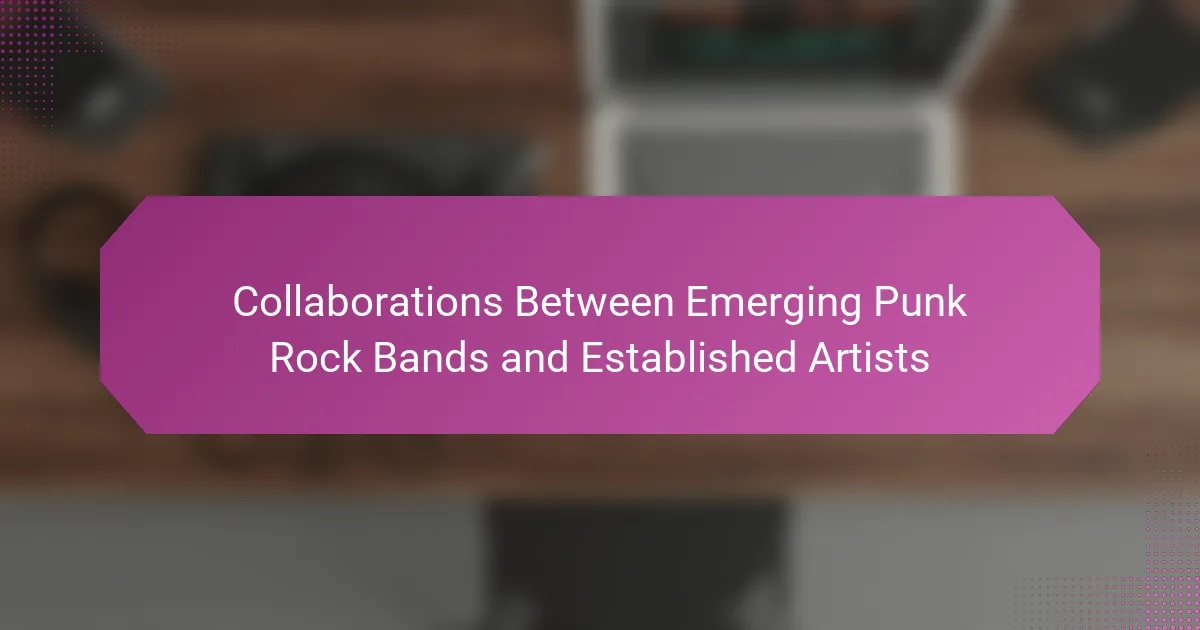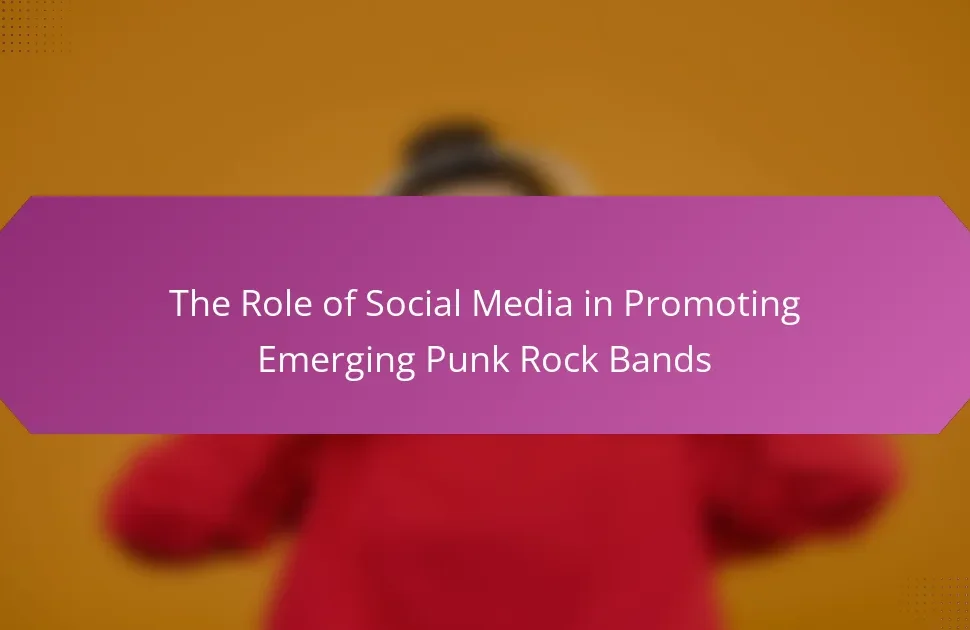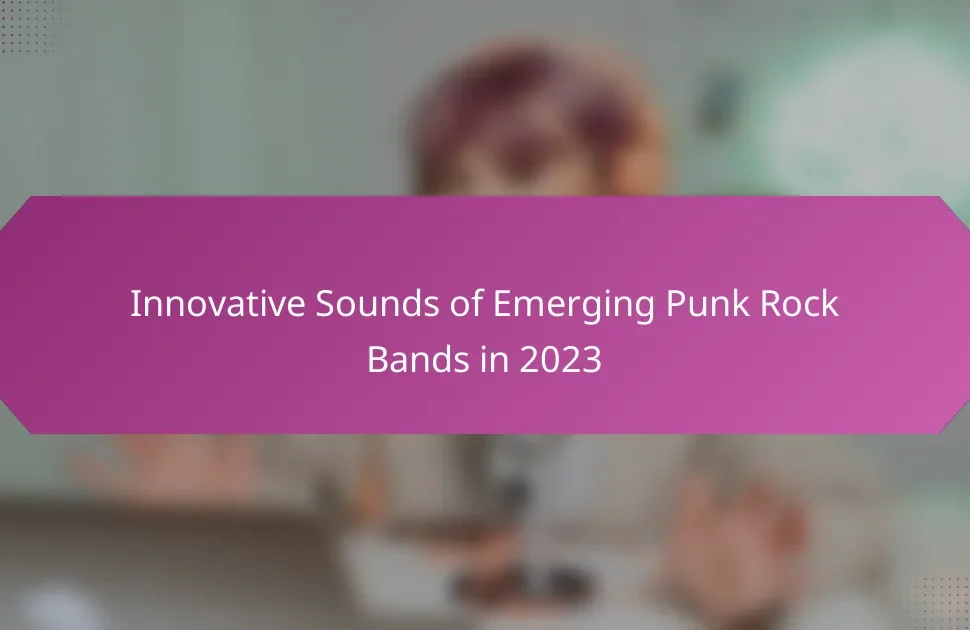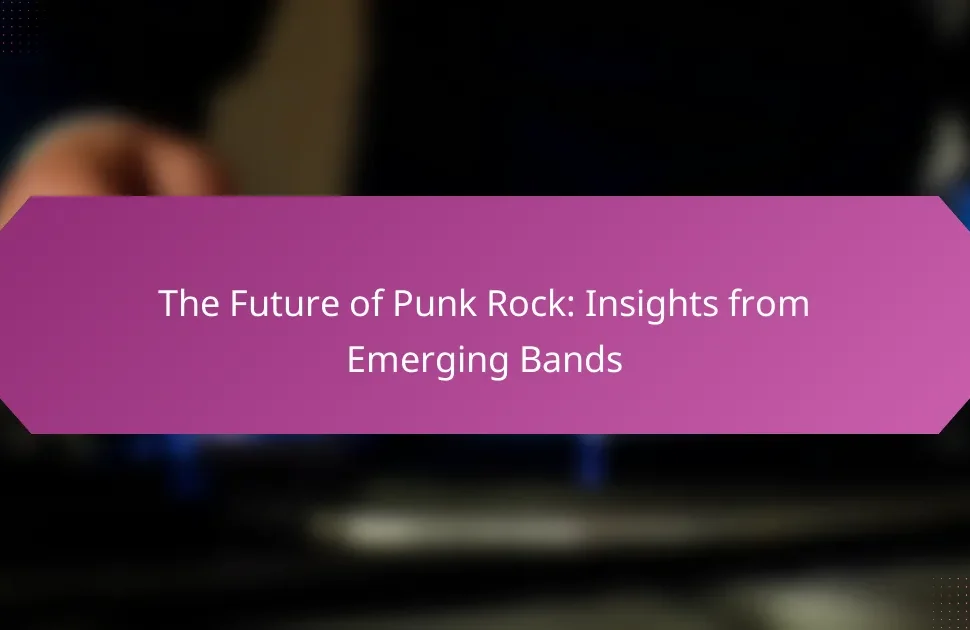Collaborations between emerging punk rock bands and established artists offer mutual benefits, enhancing visibility and creativity. These partnerships leverage platforms like Bandcamp and SoundCloud for exposure while navigating challenges such as communication issues and resource disparities. Successful collaborations can reshape audience perceptions and broaden reach, emphasizing authenticity and genre-blending innovation. Regional differences further influence these collaborations, highlighting unique cultural contexts within the punk rock scene.
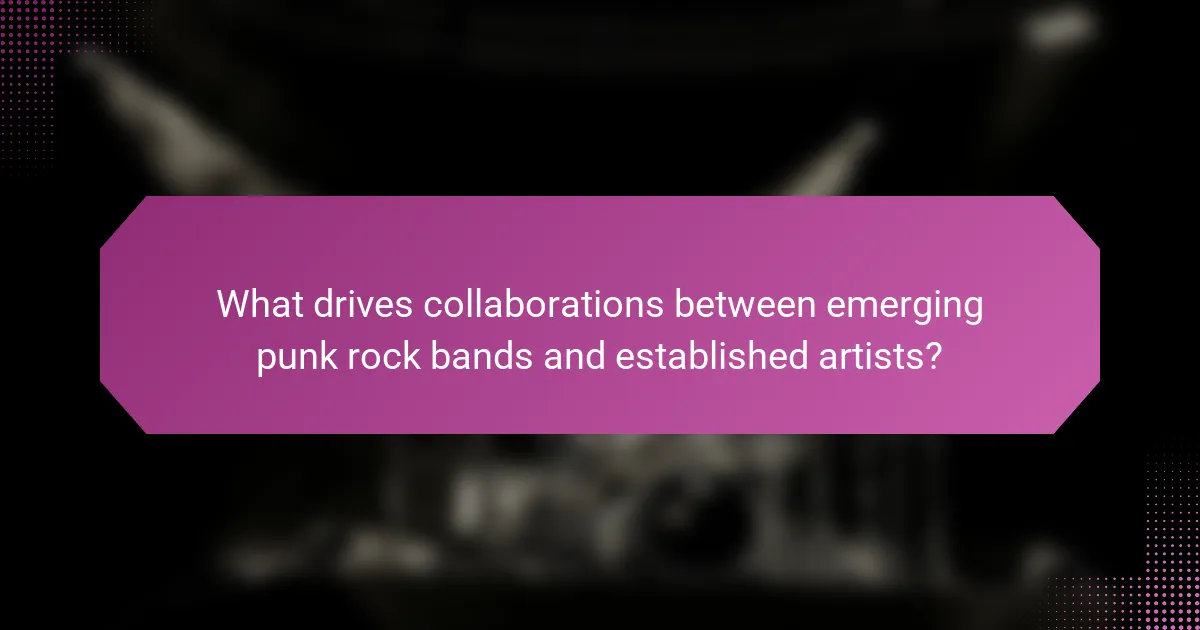
What drives collaborations between emerging punk rock bands and established artists?
Collaborations between emerging punk rock bands and established artists are driven by mutual benefits, creativity, and exposure. Emerging bands gain visibility and credibility, while established artists rejuvenate their sound and reach new audiences. These partnerships often lead to innovative musical styles, blending fresh ideas with seasoned experience. Additionally, collaborations can enhance marketing strategies and expand fan bases, creating a win-win scenario for both parties.
How do these collaborations influence musical styles and genres?
Collaborations between emerging punk rock bands and established artists significantly influence musical styles and genres by blending diverse influences. These partnerships often result in innovative sounds that push genre boundaries. Established artists bring experience and recognition, while emerging bands contribute fresh perspectives and energy. This fusion encourages experimentation, leading to the evolution of punk rock into new sub-genres, such as pop-punk or post-punk. Collaborations also help emerging artists gain exposure, allowing them to reach wider audiences and reshape the punk rock landscape.
What are the motivations for established artists to collaborate with emerging bands?
Established artists collaborate with emerging bands to revitalize their sound, reach new audiences, and foster creativity. Collaborations allow established artists to explore fresh ideas, while emerging bands gain exposure and credibility. This mutual benefit enhances artistic growth and diversifies musical styles. Additionally, established artists often seek to support the next generation of talent, creating a legacy within the punk rock genre. Collaborations can also lead to innovative projects that blend different influences, appealing to a broader audience.
How do emerging punk rock bands benefit from partnering with established artists?
Emerging punk rock bands benefit from partnering with established artists through increased exposure, credibility, and access to resources. Collaborations allow new bands to tap into the established fan base of their partners, significantly expanding their audience reach. Additionally, these partnerships provide mentorship opportunities, enhancing artistic growth and industry knowledge. Established artists often have better access to recording facilities, marketing channels, and promotional events, which can be crucial for the development of emerging talent. Ultimately, these collaborations can lead to unique creative outputs that resonate with both fan bases, creating a richer punk rock landscape.
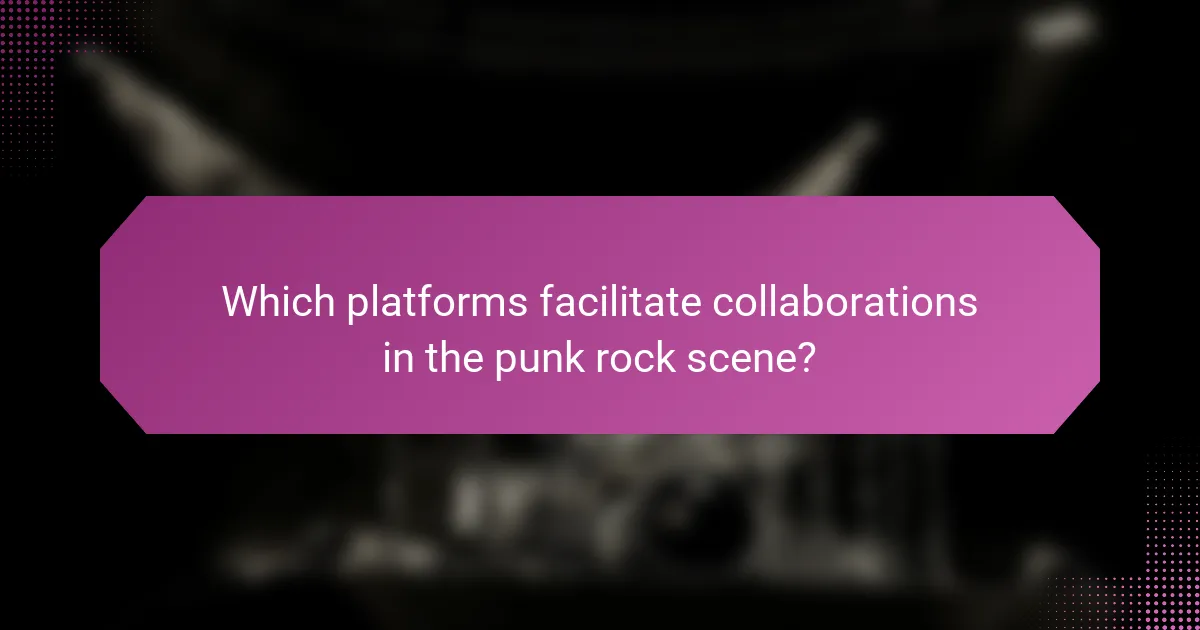
Which platforms facilitate collaborations in the punk rock scene?
Collaborations between emerging punk rock bands and established artists are facilitated by platforms like Bandcamp, SoundCloud, and social media. These platforms enable sharing music, networking, and promoting joint projects. Bandcamp allows direct sales and fan engagement, while SoundCloud supports audio sharing and feedback. Social media platforms like Instagram and Twitter help in building connections and announcing collaborations. Emerging bands benefit from exposure to established artists’ audiences, fostering growth and creativity in the punk rock scene.
What role do social media and streaming services play in these collaborations?
Social media and streaming services significantly enhance collaborations between emerging punk rock bands and established artists. They provide platforms for exposure, allowing new bands to reach wider audiences and gain credibility. Social media facilitates direct interaction between artists and fans, fostering community engagement. Streaming services enable collaborative tracks to be easily shared and discovered, amplifying their reach. As a result, these tools create opportunities for innovative partnerships that blend styles and attract diverse listeners.
How do record labels influence collaboration opportunities for emerging bands?
Record labels significantly enhance collaboration opportunities for emerging punk rock bands. They provide access to established artists, industry connections, and promotional resources. Labels often facilitate joint projects, helping new bands gain visibility and credibility. This relationship can lead to unique creative synergies that elevate the music quality and expand audience reach.
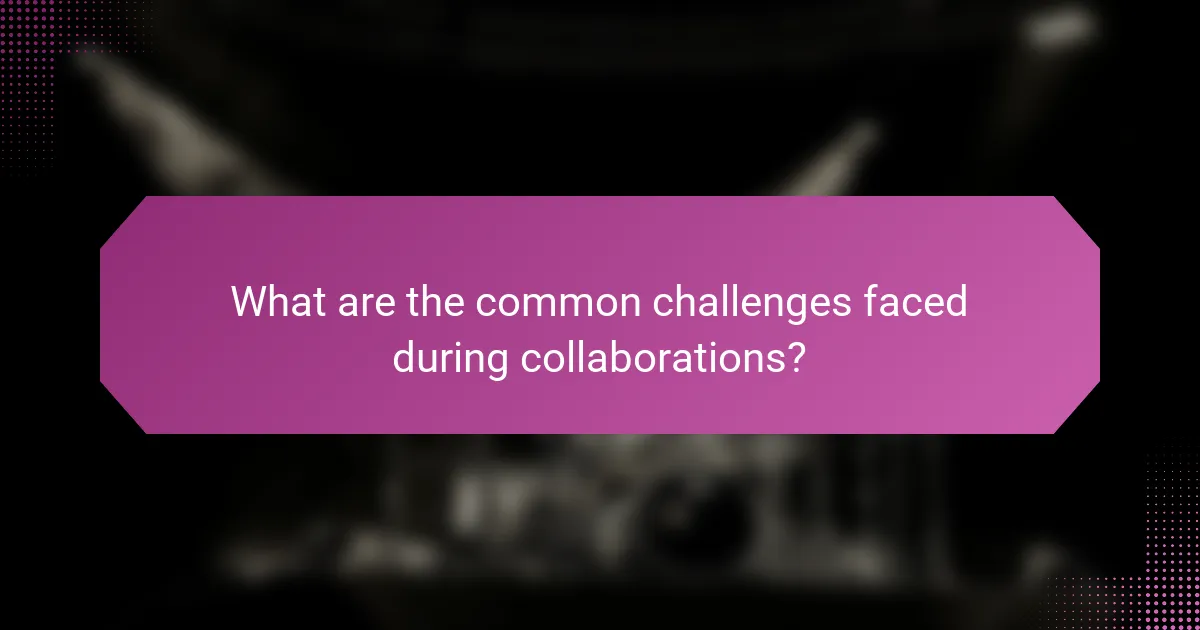
What are the common challenges faced during collaborations?
Collaborations between emerging punk rock bands and established artists often face communication issues, creative differences, and resource disparities. Misaligned expectations can lead to frustration and hinder project progress. Emerging bands may struggle with industry knowledge, while established artists might resist new ideas. Additionally, financial constraints can limit opportunities for collaboration. A lack of mutual understanding regarding artistic vision can further complicate partnerships.
How do creative differences impact the collaboration process?
Creative differences can enhance or hinder collaborations between emerging punk rock bands and established artists. These differences often lead to innovative sounds but may also cause friction. For example, emerging bands may prioritize raw authenticity, while established artists often focus on commercial viability. This contrast can foster creativity, resulting in unique musical blends. However, if not managed, it can lead to misunderstandings and conflict, ultimately affecting the project’s success. Effective communication is essential to navigate these creative tensions and leverage diverse perspectives.
What logistical issues arise when working with established artists?
Logistical issues when collaborating with established artists include communication barriers, differing creative visions, and scheduling conflicts. These challenges can hinder project timelines and artistic synergy. Established artists often have set processes, which may not align with the more flexible nature of emerging punk rock bands. Additionally, resource allocation can become complicated, as established artists may demand more funding or support, impacting budget constraints for the collaboration.
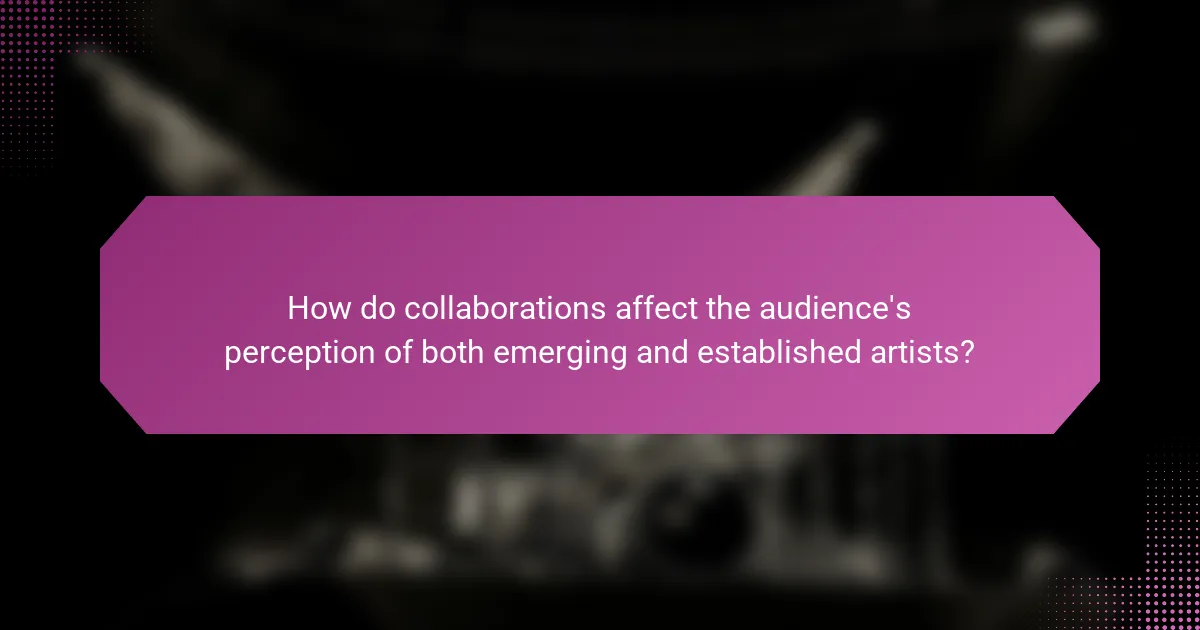
How do collaborations affect the audience’s perception of both emerging and established artists?
Collaborations between emerging punk rock bands and established artists positively influence audience perception by enhancing credibility and broadening reach. Emerging bands gain exposure and validation through established names, while established artists rejuvenate their image with fresh sounds.
These collaborations often lead to increased media coverage, drawing attention to both parties. For example, a partnership can attract fans from both artists, creating a larger, more diverse audience. This blending of styles can also foster innovation, appealing to listeners seeking new experiences.
Moreover, collaborations can shift audience perceptions of genre boundaries. When an established artist teams up with an emerging punk band, it challenges traditional views of punk rock and encourages exploration within the genre. This dynamic can result in a more inclusive fan base, enhancing community engagement.
In summary, collaborations serve as a powerful tool for both emerging and established artists, shaping audience perceptions through credibility, innovation, and expanded reach.
What impact do collaborations have on fan engagement and loyalty?
Collaborations between emerging punk rock bands and established artists significantly enhance fan engagement and loyalty. These partnerships introduce new sounds and broaden audiences, fostering a sense of community among fans.
Emerging bands gain exposure through established artists’ platforms, leading to increased visibility. Established artists often attract loyal fans to the collaborations, creating a shared experience. This synergy cultivates deeper emotional connections, as fans appreciate the blending of styles and the fresh energy brought by newcomers.
As a result, collaborations can lead to higher attendance at concerts and increased merchandise sales. Fans feel more invested in both entities, driving loyalty and engagement. The unique attribute of collaboration showcases creativity and innovation, further solidifying the bond between fans and artists.
How do collaborations shape the cultural landscape of punk rock music?
Collaborations between emerging punk rock bands and established artists significantly influence the cultural landscape of punk rock music. These partnerships often blend fresh perspectives with seasoned experience, resulting in innovative sounds and broadened audiences.
Emerging bands gain visibility through collaborations, leveraging the established artists’ fan bases. This exposure can lead to increased opportunities for live performances and festival appearances. Established artists, in turn, benefit from the raw energy and creativity of newer musicians, revitalizing their own music.
Collaborations can also spark genre-blending, where punk rock intersects with other musical styles, creating unique subgenres. For example, collaborations with hip-hop artists introduce new rhythms and lyrical styles, enriching the punk rock narrative.
Overall, these collaborations foster a dynamic cultural exchange, ensuring punk rock remains relevant and evolves with contemporary trends.

What unique attributes characterize successful collaborations in the punk rock genre?
Successful collaborations in punk rock feature authenticity, mutual respect, and genre-blending creativity. These partnerships often bring fresh perspectives, enhancing the sound and reach of both emerging and established artists. Unique attributes include cross-generational influences and a shared rebellious spirit. Collaborations can lead to innovative music styles that resonate with diverse audiences, showcasing the genre’s adaptability.
Which notable collaborations have set a precedent in the punk rock community?
Collaborations between emerging punk rock bands and established artists have significantly impacted the genre. Notable examples include the partnership between Green Day and the punk band The Interrupters, which showcased a blend of new and classic punk sounds. Another significant collaboration is the work of Rise Against with various underground bands, promoting fresh talent while maintaining punk’s core values. These collaborations often highlight unique attributes, such as the fusion of different musical styles and the mentorship of emerging artists by seasoned veterans. Such partnerships set a precedent in the punk rock community by fostering innovation and solidarity among artists.
What innovative approaches have emerged from these collaborations?
Innovative approaches from collaborations between emerging punk rock bands and established artists include genre-blending, cross-generational mentorship, and unique promotional strategies. These collaborations often result in fresh sounds that push creative boundaries. For instance, emerging bands gain exposure through established artists’ fanbases, while veterans experiment with new styles. This dynamic fosters a vibrant music scene that attracts diverse audiences. Such partnerships can lead to exclusive releases, live performances, and innovative marketing campaigns that challenge traditional music industry norms.
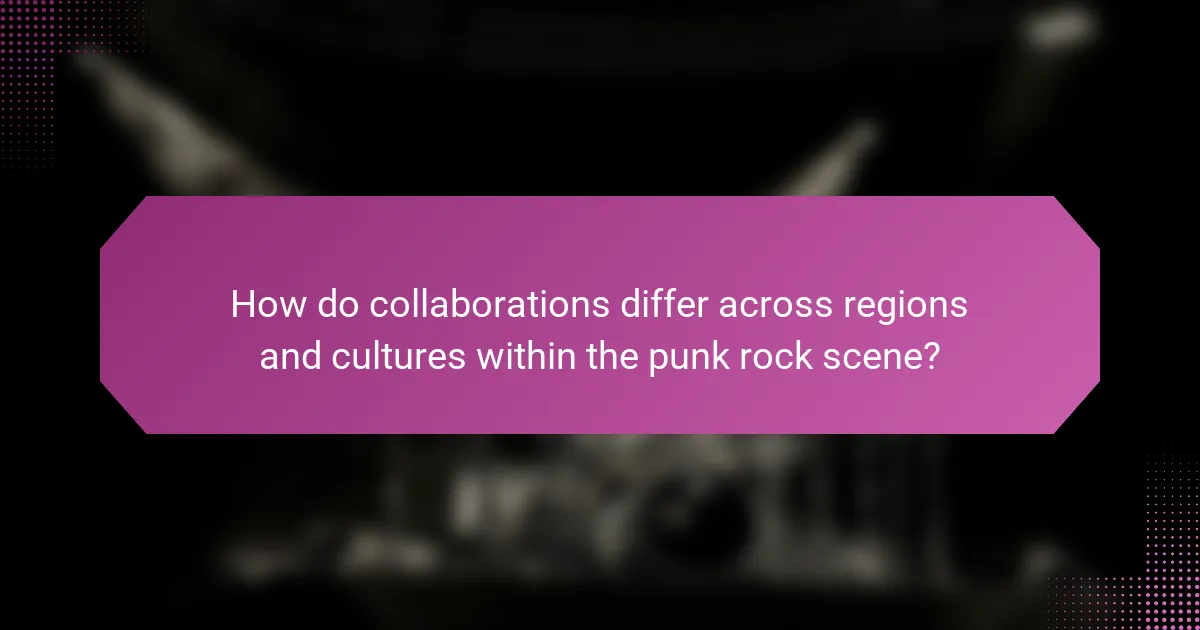
How do collaborations differ across regions and cultures within the punk rock scene?
Collaborations between emerging punk rock bands and established artists vary significantly across regions and cultures. In North America, collaborations often emphasize raw energy and political messages, reflecting local social issues. Conversely, in Europe, bands may focus on artistic experimentation and genre blending, showcasing diverse musical influences.
In Japan, collaborations often incorporate visual aesthetics and theatrical elements, creating a unique performance experience. South American punk bands may fuse traditional rhythms with punk, highlighting cultural heritage. These regional differences shape the collaborative process, impacting the sound, message, and audience engagement.
Emerging bands often seek established artists for mentorship and exposure, while established artists may collaborate to tap into fresh perspectives. This dynamic fosters innovation but also highlights the unique cultural contexts that influence collaboration styles within the punk rock scene.
What regional trends influence collaboration dynamics in punk rock?
Regional trends significantly shape collaboration dynamics in punk rock. Emerging bands often seek alliances with established artists to gain exposure and credibility.
In regions with vibrant punk scenes, collaborations may reflect local cultural influences, enhancing authenticity. For example, bands in coastal cities may incorporate surf rock elements, while those in industrial areas might draw from gritty, raw sounds.
The rise of digital platforms allows cross-regional collaborations, enabling artists to connect beyond geographical boundaries. This shift fosters diverse musical fusions, attracting wider audiences and creating unique soundscapes.
Additionally, local music festivals often serve as catalysts for collaboration, bringing together emerging and established artists. These events nurture community ties and encourage creative partnerships, further enriching the punk rock genre.
How do cultural events and festivals foster collaboration opportunities?
Cultural events and festivals create collaboration opportunities for emerging punk rock bands and established artists by fostering networking and shared platforms. These gatherings enable bands to showcase their talent, connect with industry veterans, and gain exposure to broader audiences.
Collaborative performances often occur at these events, allowing emerging artists to share the stage with established musicians. This exposure can lead to mentorship opportunities and partnerships that enhance creativity and innovation.
Additionally, festivals often feature workshops and panels, providing valuable insights into the music industry. Emerging bands can learn from established artists about marketing, production, and audience engagement, which strengthens their collaborative potential.
By participating in cultural events, emerging punk rock bands not only gain visibility but also build relationships that can lead to future projects and collaborations. This synergy enriches the punk rock scene and contributes to its evolution.
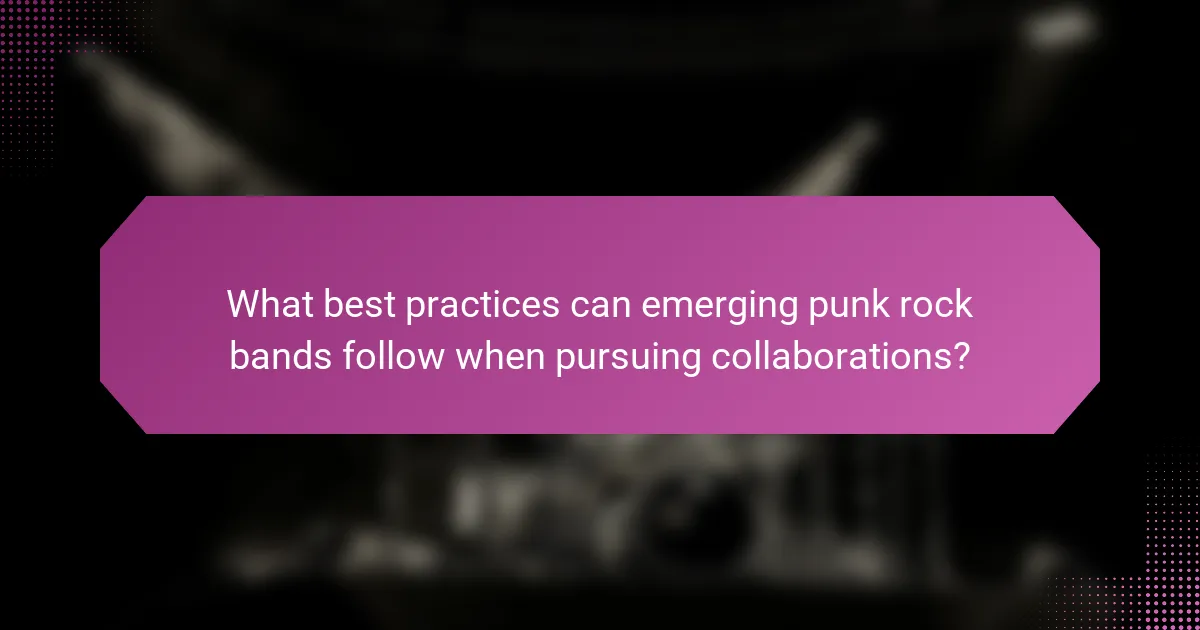
What best practices can emerging punk rock bands follow when pursuing collaborations?
Emerging punk rock bands should prioritize authenticity, build relationships, and leverage social media for successful collaborations. Authenticity attracts established artists who value genuine connections. Networking at shows and events fosters relationships that can lead to collaboration opportunities. Utilizing social media platforms enhances visibility and facilitates direct communication with potential collaborators. Engaging with fans and other artists online creates a supportive community that can amplify collaboration efforts. Additionally, being open to diverse genres can broaden collaboration possibilities, enriching the punk rock sound.
How can emerging bands effectively pitch to established artists?
Emerging punk rock bands can effectively pitch to established artists by showcasing their unique sound and vision. Focus on building a strong online presence through social media and streaming platforms.
1. Research the established artist’s style and recent collaborations.
2. Create a compelling pitch that highlights shared musical values and potential synergy.
3. Include links to high-quality recordings and performances.
4. Personalize the communication to demonstrate genuine interest in the artist’s work.
5. Follow up respectfully, allowing time for a response.
Establishing a mutual connection can increase the likelihood of collaboration.
What are the common mistakes to avoid in collaboration efforts?
Common mistakes to avoid in collaborations between emerging punk rock bands and established artists include lack of clear communication, failing to define roles, disregarding creative differences, and neglecting audience alignment.
Clear communication is vital; misunderstandings can derail projects. Defining roles prevents conflicts and ensures accountability. Addressing creative differences fosters innovation, while aligning with audience expectations enhances reception.
